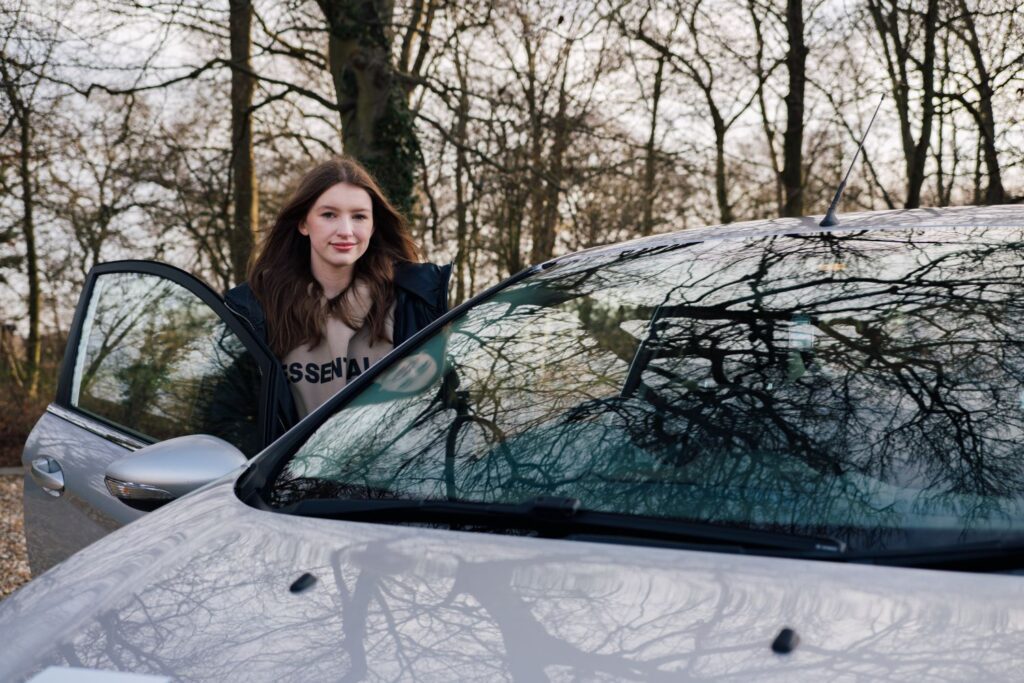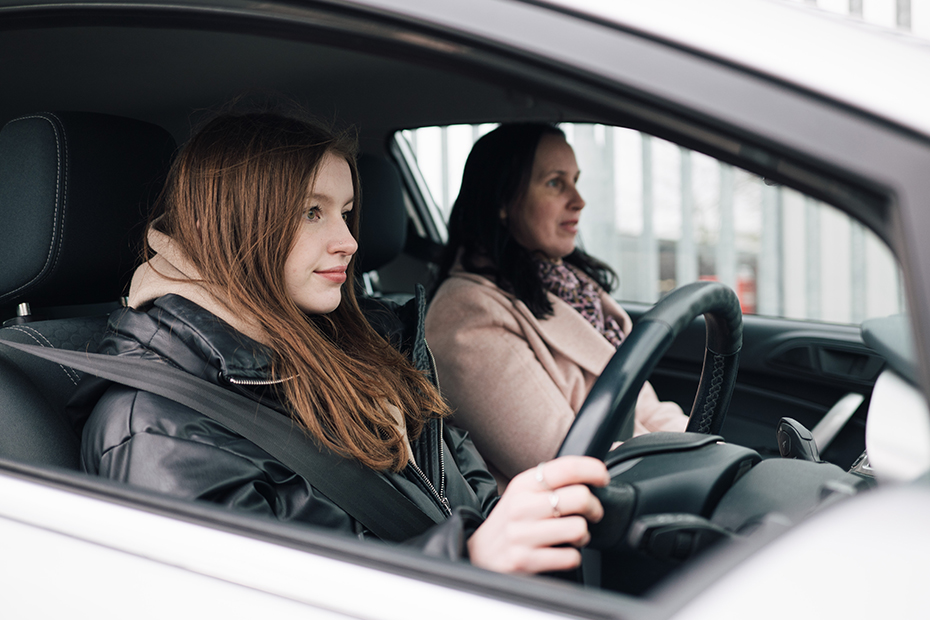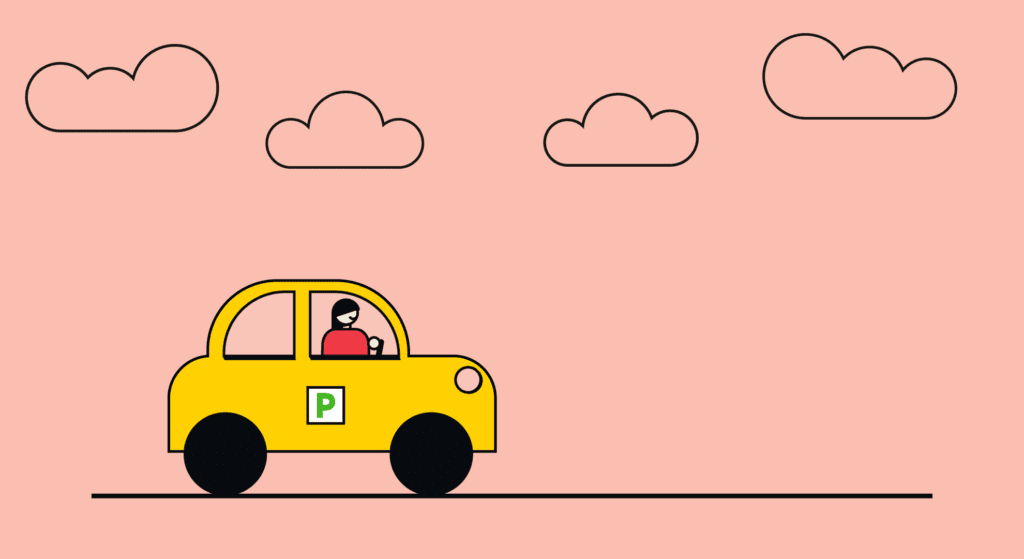The opportunities provided by passing your driving test are vast, but, for many young and new drivers, driving alone for the first time is a daunting task, especially without the safety of your driving instructor’s dual controls. As a new driver, there are several ways you can prepare for your first journey alone. In this blog, we also cover tips for driving alone for the first time.
1. Go out for that first drive as soon as possible
That first drive after passing your test is daunting, but it’ll become even more scary the longer you put it off. It’s a good idea to try and get out for your first car journey as soon as possible when you’re still riding the high of passing your driving test. This also means that everything you learned in your lessons will still be fresh, making it easier to recall the rules of the road and hopefully reducing your anxiety around your first trip alone somewhat.
2. Drive in a car you’re familiar with

If you’ve driven your parents’ car a few times before passing or you decided to buy the same car as your driving instructor, it’s a good idea to use that car for your first drive alone.
You might not need to do this if you learned in an automatic, but for manual drivers, driving in a car you’ve already driven in before can help to calm the nerves. This is because the biting point differs depending on the vehicle.
Of course, this is a luxury that most new drivers won’t have. If you don’t have access to a car you’ve driven in the past, it’s a good idea to take the process even slower, making sure you familiarise yourself with the car’s biting point and controls before you drive on busier roads. Read our blogs on the best cars for new drivers and how to adjust to a new car for more information.
3. Take a few trips out with family and friends
It’s a good idea to go out with trusted family members and friends, especially if you’ve previously driven with them in the car before. Just make sure you limit the number of people in the car with you to begin with – one or two people is plenty.
Remember, there’s no rush to start driving by yourself. Going for a few trips with family or friends can be the perfect bridge between having the safety net of dual controls and driving alone. Plus, you can make a day of it – set your GPS to your nearest coffee shop and turn a daunting task into an enjoyable day out with your loved ones.
4. Use ‘P’ plates until you gain confidence
‘P’ plates essentially tell other drivers that you’ve just passed your test, so road users should give you more space on the road and be more patient if anything goes wrong. Although ‘P’ plates aren’t compulsory, they can be a great way of giving you the space from other drivers required to get used to driving by yourself.
P plates can be used as long as you need. Many new drivers use them until they feel more confident driving alone.
5. Keep distractions to a minimum
Safe driving takes a lot of concentration, especially when you’re new to the roads. Before you reach for the radio or your Spotify playlist, think again. It’s probably best to keep distractions to a minimum while you’re driving by yourself for the first time, especially if you’re not used to driving with music on. You might also want to steer clear of high-tempo music as this can subconsciously cause you to drive faster.
Remember to put your phone away, or only use it for navigational purposes. If someone contacts you, it’s better to pull over at a safe place to reply instead of trying to answer while driving or waiting at stop signs.
6. Start by driving down familiar roads

The last thing you want to do is get lost while you’re driving alone for the first time. An easy way of avoiding this is to stick to familiar roads, at least for the first couple of journeys.
If you learned to drive near where you live, this should be quite easy. It’s a good idea to go where you spent the first few lessons with your driving instructor as these are often quiet residential roads. From there, you can amp up as you gain confidence.
If you didn’t learn near where you live, take a look at the ‘traffic’ layer on Google Maps. This will give you an indication of any busy roads that you should avoid and which side roads are uncongested. Culs-de-sacs, housing estates, and suburban residential areas are probably your safest options.
7. Drive during off-peak times
When you’re first starting out, the last thing you want is to be stuck in grid-locked traffic with irritable drivers all around. Instead, try to stick with off-peak times. This is usually during the day on weekdays, early in the morning or late at night.
8. Remember to drive defensively
When another driver cuts in front of you without giving you enough space, or a driver dangerously sticks their car bonnet out when they’re trying to turn into a main road, it can be difficult not to let road rage sink in, especially without a driving instructor sat next to you to temper your anger.
Whenever something like this happens – and it will happen – remember to take a deep breath, give them as much space as you can, and keep driving defensively. This means you should:
- Plan ahead
- Be prepared to react to other drivers
- Not expect other drivers to do what you think they should do
9. Consider taking an advanced course

If you’re still scared to drive alone, there’s no harm in taking an advanced course, such as Pass Plus. Additional courses like Pass Plus can help improve confidence on the road, as well as driving skills and safety.
Taking a course like Pass Plus can also have the added benefit of reducing your insurance premiums. This is particularly useful for young drivers who face high insurance premiums.
What about when I’m driving long distances alone for the first time?
It’s a good idea to only drive long distances if you’ve already been driving for a while. Make sure you schedule plenty of breaks, and if you find yourself getting sleepy, take a rest at the nearest petrol station. It’s a good idea to keep the windows cracked or air conditioning on while driving to prevent yourself from getting drowsy.
If you’re driving long distances by yourself, it’s a good idea to use a satnav for navigation. This will help the journey go more smoothly.
What about driving on the motorway alone for the first time?
Many new drivers will have driven on the motorway during their lessons, but driving on the motorway alone for the first time can still be very daunting.
Make sure your vehicle is in good condition before you do this – some basic under-the-bonnet fluid level checks can help.
When joining the motorway, build up speed on the slip road and make sure you check your blind spots before merging.

If you’re not confident while driving on the motorway, it’s a good idea to stick to the left-hand lane as this will allow other motorway users to overtake you. If you’re overtaking another car, remember to check your blind spots and indicate before you change lanes so other road users are aware of what you plan on doing.
Make sure to observe any road signs while you travel as the speed limit can change.
Make sure to take out new driver insurance
Just passed your test? Make sure to change your insurance over to new driver insurance by giving us a call.
Did you know we also offer black box insurance without the regular restrictions that come with black boxes, such as curfews? Our FluxScore telematics scheme rewards safe driving and could cut your premiums by up to 60% – perfect for young drivers. Call us on 0800 369 8590 for a quote or request a callback at a time that suits you.

